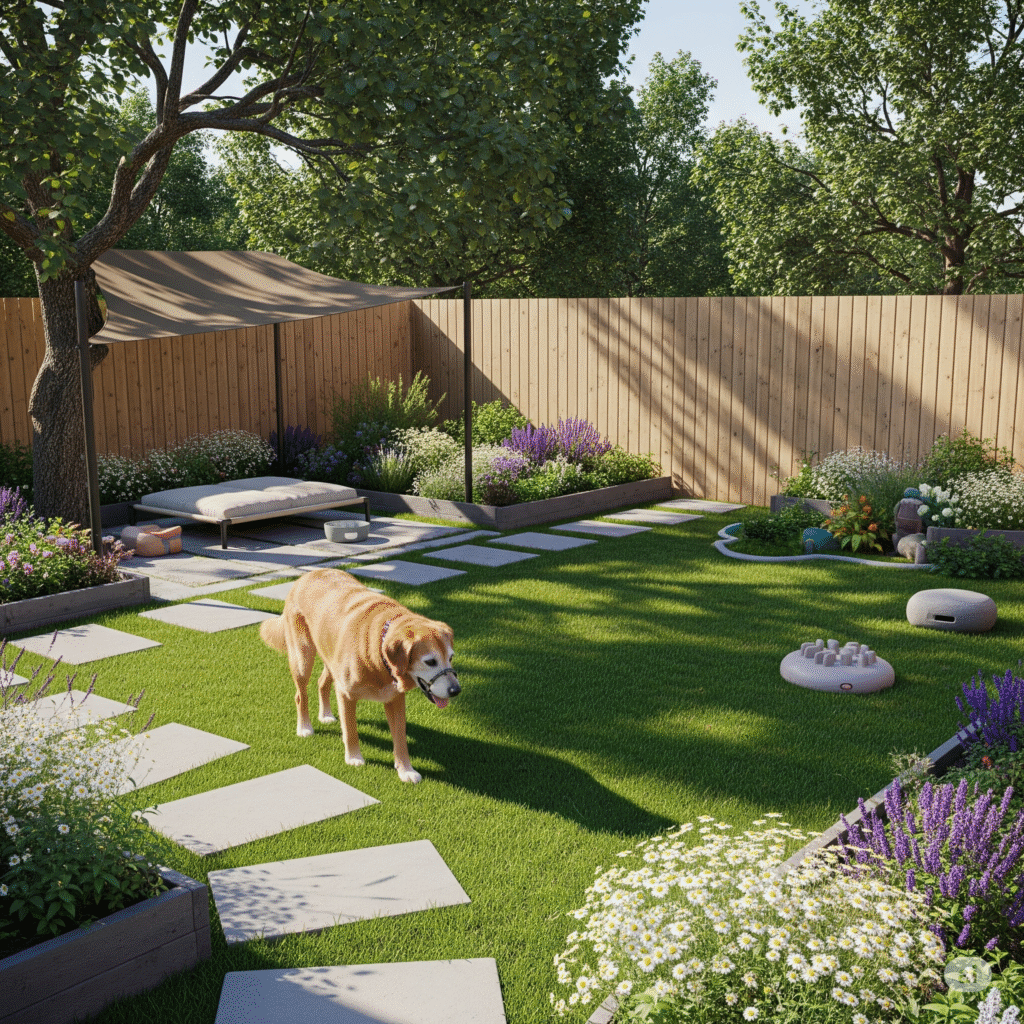
As dogs age, their needs change—and that includes how they use and enjoy outdoor spaces 🐾🌿.
A yard that was once perfect for a young, energetic pup might now be full of hidden hazards for a senior dog. Making your yard senior-friendly ensures your furry friend can still enjoy fresh air, sunshine, and a little exploring without risk to their safety or comfort.
Here are practical steps to create a safe and accessible yard for your senior dog:
1. Smooth Out Uneven Surfaces
Older dogs are more prone to slips, trips, and falls. Fill in holes, remove loose stones, and level uneven patches of grass or dirt. Consider adding non-slip outdoor mats in areas they walk often.
2. Install Ramps for Easy Access
If your yard has steps, add a gentle ramp with non-slip traction. This helps dogs with arthritis, hip issues, or reduced mobility get in and out comfortably without strain.
3. Provide Plenty of Shade
Senior dogs can overheat quickly, especially in warm weather. Plant trees, install shade sails, or place a dog-friendly canopy to give them a cool resting spot during sunny days 🌞.
4. Keep Toxic Plants Out of Reach
Some common garden plants—like azaleas, lilies, and foxglove—can be dangerous to dogs. Remove or block access to toxic plants and replace them with pet-safe greenery.
5. Create a Soft Resting Area
A cozy, shaded outdoor bed or cushioned mat can give your senior dog a comfortable place to relax. Elevated beds are also great for keeping them off damp ground.
6. Secure Fencing to Prevent Wandering
Older dogs may become disoriented or wander unintentionally. Ensure your yard is fully fenced and that there are no gaps or weak points where they could escape.
7. Keep Water Easily Accessible
Place a water bowl in a shaded area and refill it often. For hot days, consider a pet water fountain to keep it cool and fresh 💧.
8. Remove Sharp or Hazardous Objects
Clear away sharp sticks, tools, or garden equipment that could cause injury. Seniors may not move as quickly and are more vulnerable to cuts or bruises.
9. Add Gentle Sensory Enrichment
A few safe outdoor toys, scent trails with treats, or even a small digging box can provide mental stimulation without overexerting your dog.
10. Monitor Time Outside
Senior dogs may tire faster or struggle in extreme weather. Supervise their yard time and bring them indoors if they show signs of fatigue or discomfort.
Final Thoughts
A safe, comfortable yard can help your senior dog enjoy the outdoors well into their golden years. With a few thoughtful adjustments, you can give them the freedom to explore while protecting their health and happiness ❤️🐶. PetsDogPuppy
